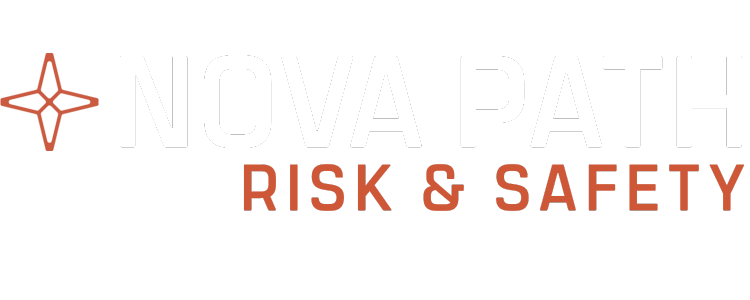The Rise of Safety as a Commodity in the U.S.
A high-profit industry selling ‘safety’ has accelerated its rise in the US—and it’s far more about making money than safe outcomes. But here’s something the collective market will never tell you.
Perspective shapes how someone sees a topic, much like looking through a prism. ‘Safety’ falls into that elusive category—it means different things to different people. That’s part of what makes the profession so powerful. Diverse thinking pushes organizations to deliver services and products while avoiding potential risks. But once we step back and view the entire industry, the commoditization becomes hard to ignore.
Early in my career, I joined a safety consulting firm. There, I learned the real driving force behind the industry: billable hours. Later, I supported a structured, risk-based HSE system in the Petroleum division of an international mining company. But it wasn’t until I left the mining company that I realized two things: safety in the U.S. has become a commodity, and that commodity relies heavily on ‘rules-based’ systems that cater to prescriptive regulation. When I zoomed out, the evidence became impossible to ignore.
How HSE Vetting Became a Transactional Process
Let’s consider a real-world example from the Oil & Gas industry. Operators own the wells. They subcontract nearly every aspect of well operations. As a result, they must vet those subcontractors’ safety practices.
To streamline that vetting process, operators started using “vetting companies” to evaluate HSE programs. Over time, those evaluations created an eerie uniformity. Consulting firms began selling nearly identical HSE systems. During contractor audits, I saw documents where only the contractor’s name stood out—bolded, in all caps—clearly pasted into a standard template.
Years later, I helped a company get its HSE program validated. A pop-up in the vetting system read something like: “Need an HSE system? Contact XYZ Consulting Company to purchase a ‘pre-approved’ HSE Program.” Smaller firms sold individual HSE sections for a few hundred dollars each. Buyers inserted their company names and submitted them—no scrutiny needed—because they were “pre-approved.”
When we step back, the problem becomes clear. The operator pays the verification company. The verification company, in turn, directs contractors to purchase from the consulting firm. It’s a loop that creates the illusion of safety rather than assurance. An optimist might say the HSE program gets embedded—but ask yourself how that really plays out when a small business owner navigates it alone.
In one of the major HSE consulting firms I encountered, I initially thought consultants would use their diverse experiences to tailor solutions. But the firm’s focus quickly revealed itself: build your network, grow the business, push the next standard offering. If corporate launched something new, the consultants had to sell it—whether it fit or not. Later, I watched another top firm roll out the same product—different packaging, same content. Even when they supported international clients, their advice centered on OSHA regulations—not actual risk.
The Global Divide: Risk-Based vs. Rules-Based Safety
As a systems engineer, I see how the U.S. regulatory environment promotes prescriptive rules. That influence spreads across related systems. HSE curriculums in U.S. universities reflect this focus, producing graduates fluent in OSHA-style expectations—but not in identifying broader, risk-based conditions. I’ve mentored many of them. They quickly recognize guarding issues but need retraining on system-based risk identification.
In contrast, professionals trained in Europe or Australia typically emerge from environments rooted in risk-based safety. The difference shows up in their conversations, especially on LinkedIn or at conferences. U.S.-trained professionals emphasize safety culture—because rules-based systems require people to follow rules. Risk-based systems require people to understand complexity. Two different worlds. Most people don’t stop long enough to notice the contrast.
Companies mirror this pattern. A wise consultant once told me: “Most companies just want to meet the minimum standard. You can make good money doing that. Anything more? Too complex. Not marketable.” He was right.
So here we are—blanket rules applied across a dynamic industry, shaping rule-followers in a world where risk conditions and human states constantly change.
So, what now?
We need to ask:
- What’s driving the commoditization of safety?
- Is it profit? Regulatory interpretation? Industry pressure?
We must examine how people define safety. With such a wide range of meanings, how can we compare the U.S. model to systems in Europe or Australia? Those regions lead with risk—not rules.
Where will innovation come from? Organizations like the Construction Safety Research Alliance are doing great work. But how can we expand that model—funding research, not opinions?
What should tomorrow’s curriculum look like? Maybe it’s time to focus more on systems thinking, human behavior, project management, and communication—and less on regulatory memorization.
We won’t shift the industry overnight. But we can start by asking better questions—and refusing to settle for safety that’s only skin deep.
The safety industry in the U.S. has evolved into a high-profit sector—driven more by revenue than meaningful risk reduction. But the reality behind this shift is rarely discussed.
Check out more on our website here: Safety Services
Written by: Justin Abshire, MSIE, MBA, PMP, CSP, Founder, Industrial Engineer, Operational Risk & Resilience Executive


Leave a Reply